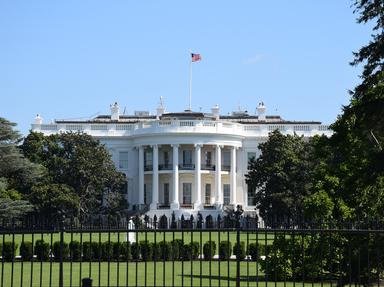Quiz Answer Key and Fun Facts
1. Leaving office in March 1909, President Theodore Roosevelt runs for a non-consecutive term in the 1912 election as a third party candidate for which party?
2. Proposed in December 1917, the Eighteenth Amendment established Prohibition in the United States. Which president oversaw its enactment one year following the ratification of the amendment?
3. Woodrow Wilson's fourteen points was a plan for post-war peace following the November 1918 armistice. The fourteen points formed the basis of the Treaty of Versailles during the Paris Peace Conference of 1919. True or false?
4. Franklin D. Roosevelt holds the important distinction of being the first president to be elected to a third term of office. However, prior to election for his first term in November 1932, Roosevelt unsuccessfully ran as the Democratic vice-presidential candidate in the 1920 election. Roosevelt was the running mate of which candidate?
5. Proposed in March 1947, the Twenty-Second Amendment imposes a limit of two elected terms on the Presidency. The two-term limit imposed by the amendment first applied to which president?
6. The 1948 election is famous for the erroneous newspaper headline "Dewey Defeats Truman". The headline appeared in which newspaper?
7. Inaugurated in January 1961, John F. Kennedy became the first president whose religious affiliation was that of Roman Catholicism. However, during the 1960 election, Kennedy was the second catholic presidential candidate in American history. Which unsuccessful candidate preceded Kennedy as the first catholic presidential candidate?
8. Proposed in March 1971, the Twenty-Sixth Amendment established a national voting age at eighteen. Which president oversaw the extension of the vote to eighteen year olds with the ratification of the amendment?
9. Prior to the 2000 election, Ronald Reagan became the oldest president to assume the office when inaugurated in January 1981. How old was Reagan when inaugurated as president?
10. Inaugurated in January 1989, George H. W. Bush succeeded Ronald Reagan as the forty-first president. However, Bush's election in the previous November was highly unusual due to Bush being the first president since Martin Van Buren to serve in what position when elected?
Source: Author
Cuish
This quiz was reviewed by FunTrivia editor
stedman before going online.
Any errors found in FunTrivia content are routinely corrected through our feedback system.
